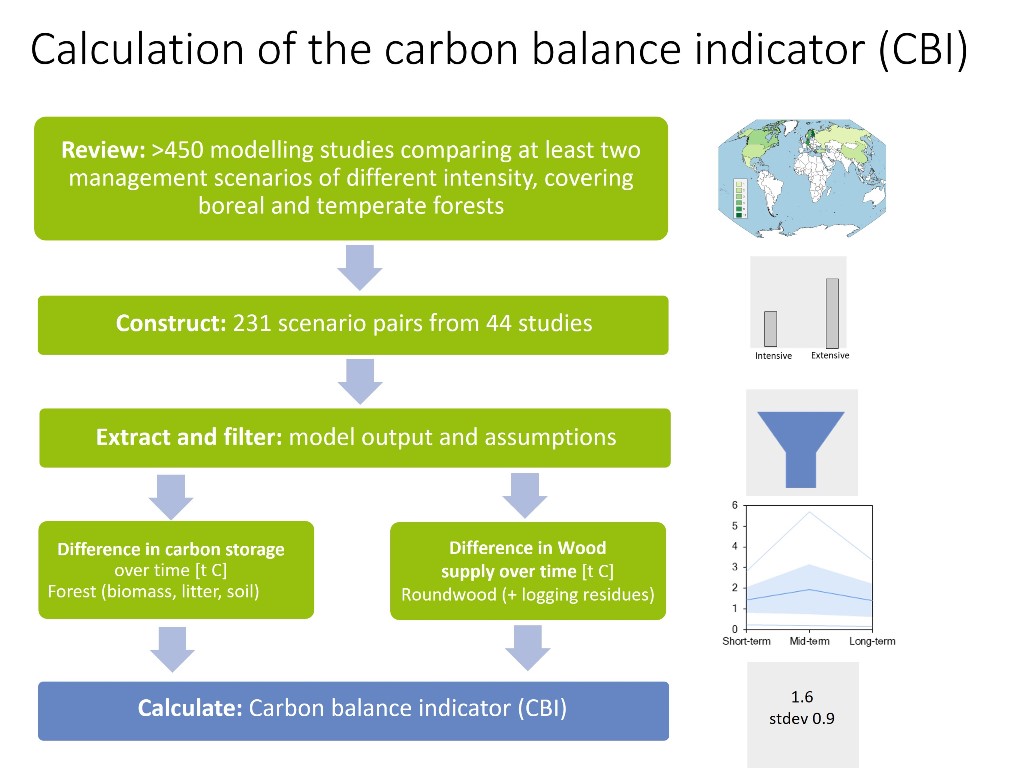Preprint
Review
Closing an Open Balance: the Impact of Increased Roundwood Harvest on Forest Carbon
Altmetrics
Downloads
402
Views
764
Comments
0
A peer-reviewed article of this preprint also exists.
supplementary.xlsx (413.62KB )
Submitted:
10 March 2022
Posted:
15 March 2022
You are already at the latest version
Alerts
Abstract
Fossil-based emissions can be avoided through using wood in place of non-renewable raw materials as energy and materials. However, increasing wood harvest influences forest carbon stocks. This effect may reduce the overall climate benefit of wood use significantly but is widely overlooked. We carried out a systematic review of simulation studies and compared differences in forest carbon and amount of wood harvested between more and less intensive wood harvest scenarios for three different time perspectives; short (1-30 years), mid (31-70 years) and long (71-100 years). Out of more than 450 reviewed studies 44 provided adequate data. Our results show that increased harvesting reduced carbon stocks over 100 years in temperate and boreal forests roughly 1.6 (stdev 0.9) tC per tC harvested. The value proved to be robust when outliers explicitly influenced by other factors than change in harvest rate, such as increase in fertilization or forest area, were removed. Interestingly, no significant difference in carbon impacts was found for average values of boreal and temperate forests or between short and long time-horizons. However, impacts tend to be greatest in the mid-term. This carbon balance indicator that we estimated can be interpreted as carbon debit of wood harvest in forests. It is significant compared with the typical GHG credits in technosphere generated by avoiding fossil emissions in substitution and increase in carbon storage in harvested wood products, and should not be ignored. Our estimates provide default values that can directly be included in GHG balances of products or assessment of mitigation policies and measures related to wood use. However, more systematic scenarios and transparent data in which different factors influencing forest carbon stocks are separately studied are clearly required to provide better constrained estimates for specific forest types.

Keywords:
Subject: Environmental and Earth Sciences - Environmental Science
Copyright: This open access article is published under a Creative Commons CC BY 4.0 license, which permit the free download, distribution, and reuse, provided that the author and preprint are cited in any reuse.
MDPI Initiatives
Important Links
© 2024 MDPI (Basel, Switzerland) unless otherwise stated





